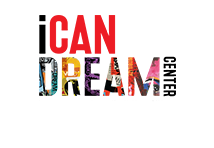
Visual supports: An eye-opening communication tool
It is true that no two learners are exactly alike. Some learn better through reading, and others excel through listening or doing.
For students with developmental disabilities who may have difficulty communicating or understanding others’ communication, it is important to present information in ways that match the students’ unique learning styles and optimize their ability to learn.
Visual supports are concrete representations of information that educators can use to help students understand a topic. With visual supports, students can learn to communicate with others and make sense of the world around them while in the school setting.
These supports can easily be customized to address individual needs and a student’s level of comprehension. For example, a student who is challenged by reading may not be able to understand a schedule that uses words, so a schedule that uses pictures would be more useful to that student.
Research proves the benefits
According to Shari D. Rosen, “Children with ADD/ADHD who have trouble focusing, carrying out tasks, and transitioning from activities can benefit from having a visual schedule helping them understand and stick to routines. Even typically developing children benefit from additional visual information.”
Carole Mathewson coordinated a study on visual communication that highlighted its benefits. “The results of the study showed that [a] male subject with autism improved in his ability to transition between subjects, display more appropriate behaviors, and improve on his academic scores after consistent use of the activity schedule,” Mathewson wrote. “Results of this study supported the existing literature on using a picture activity schedule to increase the desirable behaviors, transitional skills, and academic skills of students with autism.”
At iCan Dream Center, visual supports are incorporated throughout the building and curriculum. After school students use a visual board, and staff members use necklaces with images to illustrate various activities. These activities include snack time, yoga, tennis, social stories, homework and more. iCan Dream Center staff also use pictures that depict different emotions to help students communicate what they want or feel in a moment.
All students have the ability to communicate and learn given the right tools, and visual supports are vital to the toolbox.
References
“71 Best Picture Schedules Images: Visual Schedules, Autism Resources, Autism Classroom.” Pinterest, 28 Oct. 2019, www.pinterest.com/gogogirlbling/picture-schedules/.
Mathewson, Carole. Masters of Arts in Education Program, Apr. 2010.Rosen, Shari D., and Rosen. “Shari D. Rosen.” ELG, Apr. 2018, www.chinaelg.com/why-visual-schedules-are-beneficial/.
